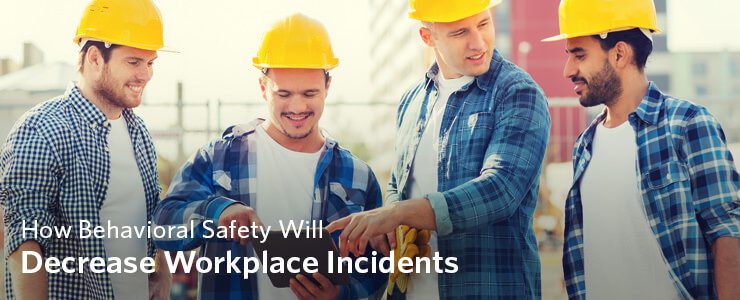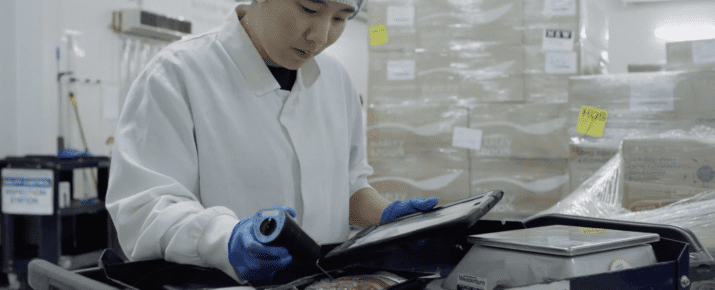How Behavioral Safety Will Decrease Workplace Incidents
Checklist Best Practices | By | 19 Apr 2016 | 6 minute read

Rusty, an employee at Allen Myers in Pennsylvania, has been in construction for 43 years and has seen it all. He says that safety is in the DNA at Allen Myers, a road construction company, “it’s almost like breathing in anything we do.” Companies each year pour millions of dollars into safety initiatives; this could be in the form of new tools, new processes, new equipment and so on. How do companies like Allen Myers ensure they see safer procedures as a result of that investment in safety initiatives? In order to elicit real change within an organization, whether this change is in safety or other areas of the business, you must get buy in from each individual employee. By focusing on implementing new tools or processes, we can sometimes forget that addressing behavioral change is the the way to decrease safety incidents. The most advanced harnesses in the world cannot prevent a fall injury if they’re improperly used or worse, not worn at all. How, then, do we encourage behavioral change to make safety a priority and a daily focus for each individual in an organization?
Historically, safety initiatives were pushed from a top-down approach. Safety managers and engineers sat in an office, identified risks, outlined plans to address them, and educated workers on how they would be performing their jobs. This method lends itself to producing “safety cops” who monitored worker behavior and reported on compliance. It also creates a strong “us vs. them” tension, decreasing engagement amongst frontline workers. It’s difficult, if not impossible to keep people safe by expecting someone else to be responsible for their safe behavior. They must be responsible for their own safe behavior. Andrew Morris, a field manager at the Virginia bridge project says “I don’t yell at people. I don’t jump down people’s throats.” As research around employee engagement has advanced, so has research around behavioral safety. The two are inextricably linked and have essentially come to the same conclusions: give workers the power to make decisions in their own jobs, enhance communication within and amongst teams, ensure that objectives are clearly communicated and rewarded.
Getting workers involved to increase engagement
Dr. E Scott Geller is one of the foremost experts in behavioral safety and he suggests that the best way to get workers engaged is to involve them in identifying their own at risk behaviors and facilitate discussions around how to address those at risk behaviors. Peers will perform behavior observations on each other in the form of checklists. It’s important to note that these checklists are not meant to be a tool to check up on one another or be a means of reporting on individual performance. They’re anonymous and meant to expose at risk behaviors of the group, and so should be analyzed for macro trends in the organization. This system has another strength in that it addresses the complexity that comes with each job site. No one knows better than the worker who is on the job site each day, performing his or her specialized task, what is at risk behavior. A safety manager only has so much insight into each specialized job, so by prompting each worker to give feedback on their job and collaborate with safety managers, you leverage the collective knowledge of each worker and the “safety expert” within the organization.
Once these observations have been conducted and analyzed at a macro level, teams can develop critical behavior checklists and identify pause points or commonly skipped steps. This discussion around safe behaviors is incredibly valuable not only for identifying at risk behaviors, but also in involving workers in their own safety and getting everyone within the organization actively focusing on it. Furthermore, it encourages group participation and sets the groundwork for what Dr. Geller calls “actively caring for people”.
This idea is mirrored almost exactly in Toyota’s Jidoka principle. Jidoka is the “human touch” that Toyota applies to their manufacturing process. The main goals of this principle are to:
Increase trust – this organization respect for people empowers and encourages employees to report issues or unsafe procedures
Improve communication – Issues should be communicated across different teams and various stakeholders
Contain the problem – address the issue before it becomes a habit or spreads within the organization
Involve others – communicate to managers or other teams to help solve issues
Drives prevention – identify root causes in order to keep the problem from recurring
Gary Convis, former president of Toyota in Georgetown Kentucky, when asked what he expected of his workers, said: “Only two things: come to work and pull the cord.” While this quote is originally intended to address manufacturing defects, the same culture of openness and blamelessness is incredibly important in getting workers to report on their own safety and to identify root causes. Of course, none of this is possible without open dialogue.
Promoting discussion
Just as in the Jidoku principle at Toyota, Dr. Geller says that promoting discussion is the best way to encourage teamwork and also to hold each team member accountable. Again, holding team members accountable does not necessarily mean a reprimand. There is the added benefit, when holding others accountable, that this becomes engrained within a team, and by extension an organization’s, culture. You can even say something like “I realize you were fine just now reversing that vehicle without a spotter, but all of us want to set an example.” Safety is essentially a numbers game, so if the number of risks increase thanks to behaviors that put people at risk, it’s an eventuality that an incident will occur. This community of people looking out for one another can only be fostered if individuals are held accountable but not blamed, a nuanced but impactful difference.
The critical behavior lists, once they are developed by workers, for workers, also address potential issues with cognitive dissonance. Cognitive dissonance occurs when people’s beliefs are inconsistent with their actions. In the old model where workers were implementing processes they may not have agreed with, cognitive dissonance was much more common and thus caused workers to resist these processes far more.
In fact, change of any sort, whether it’s new safety initiatives or even a change at home, activates the prefrontal cortex in our brains. Because of the prefrontal cortex’s close ties with the amygdala, the emotion center of the brain, putting strain on the prefrontal cortex can trigger fear, fatigue and anger. These are certainly not the emotions you want to elicit when introducing new safety or quality assurance initiatives. When individuals are involved in their own decision-making and discussing it at length with colleagues, we can avoid triggering that sort of stress.
Improving competence
The idea of competence in this context isn’t necessarily simply being able to perform a task. Employees generally want to be able to perform their jobs well, to learn, and to feel that they are progressing toward worthwhile goals. This is the definition that many human behavior specialists assign to “competence”. The fact that employees are self-motivated to learn, grow, and perform worthwhile work is great news for safety managers. This means they do not need to be extrinsically motivated, but rather if they are given the right tools and support, will be self-motivated to adhere to safety procedures. Connecting the “why” and the full story of how safety initiatives are impacting the company as a whole, and the employees’ contribution to those goals will ensure maximum buy in. Here, we return to the idea of cognitive dissonance. if employees believe in the organization’s overall purpose (to create and maintain a safe working environment) and it is aligned with their own purposes, they will be more inclined to modify their behaviors in order to avoid cognitive dissonance.
Competence will increase for each employee thanks to feedback. This is the pivotal way we can measure and report upon competence within an organization. Some feedback is immediate and organic. We quickly learn how important spotters are when reversing a vehicle, for example, potentially thanks to some close calls. However, other feedback needs to be consciously cultivated through observation, as the at risk behavior doesn’t present immediate feedback. This may include something like equipment check before each task.
This feedback loop may also take a bit longer and require more data in order to report on the effects that changed behaviors have had on the organization. This requires communication and transparency from the organization. If a new initiative for fall hazards began two quarters ago, report on the improvements or observations from this initiative to let individuals understand how they’re contributing. Similarly, structure rewards or performance metrics to align with safety initiatives. For example, if you want to ensure that field managers are coaching employees, build that into their metrics so they know how they’re performing.
Reporting on a decrease in injuries or progressing toward the goal of a zero incident workplace is important, and the metrics attached to that will certainly steer you in the right direction. However, believing blindly in metrics can lead you astray if you’re not appending additional information to them. Bob Fitzgerald, safety-and-health principal with Southern Co., a Birmingham, Ala.-based electric utility serving the Southeast, believes a narrow focus on achieving safety numbers alone “does not meet the true goal of a safety.. ideally, injury severity should be considered because incident rates alone may not paint the clearest picture” says Fitzgerald. “Stressing zero RIR [recordable incident rates] could cause employees and contractors to misdirect concerns” or “to intentionally or unintentionally avoid reporting incidents.” Again, if we’re not careful to establish open discussions and to avoid pointing fingers, employees could be encouraged to misreport or underreport incidents, skewing the data further.
It’s easy to believe that safety is simply a product of the proper tools, training and leadership decisions. It’s also easy to forget the human element that’s inherently linked to safe workplace practices. Without proper commitment from frontline employees, safety practices can turn out to be half-hearted or non-existent. Getting employees on board with safety is simply a matter of eliciting decisions from the workers themselves, rather than pushing decisions upon them, enhancing communication within the field, and providing the support for continual improvement. We’d love to hear how you’ve used these practices to increase safety engagements. Feel free to share your stories in the comments below.
Important Notice
The information contained in this article is general in nature and you should consider whether the information is appropriate to your specific needs. Legal and other matters referred to in this article are based on our interpretation of laws existing at the time and should not be relied on in place of professional advice. We are not responsible for the content of any site owned by a third party that may be linked to this article. SafetyCulture disclaims all liability (except for any liability which by law cannot be excluded) for any error, inaccuracy, or omission from the information contained in this article, any site linked to this article, and any loss or damage suffered by any person directly or indirectly through relying on this information.





